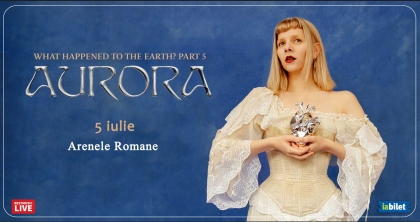Aurora performs at the Romanian Arena on July 5, 2025 |
||
 
Aurora Aksnes, the Norwegian ethereal songstress known for weaving celestial soundscapes, will grace Arenele Romane on July 5th, 2025, as part of her monumental What Happened to the Earth? world tour. This concert promises a transcendent blend of raw emotion, mythological storytelling, and avant-garde artistry – a hallmark of Aurora’s career since her 2012 debut. |
||
| Writer: Vlad Ionut Piriu | ||
|
I don't have Facebook
|
||
Aurora performs at the Romanian Arena on July 5, 2025 | FESTIVALPHOTO







